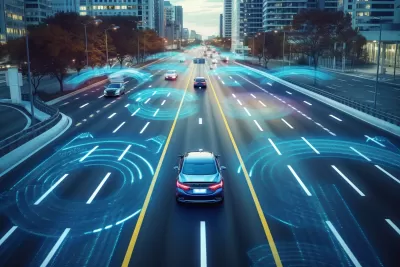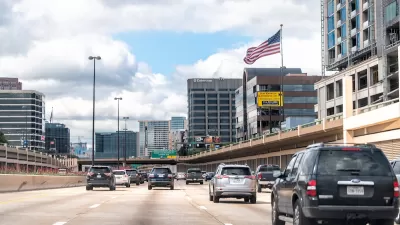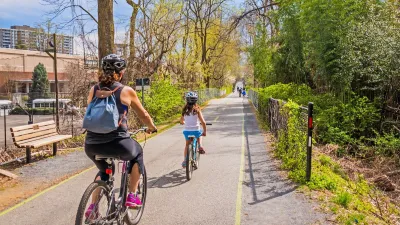State officials look to generative AI to get a five-year surge in traffic deaths under control.

Traffic deaths in California have increased 22 percent since 2019, according to a study by transportation nonprofit TRIP. “We’re losing about 12 people a day,” Timothy Weisberg with the California Office of Traffic Safety told CBS News Sacramento reporter James Taylor.
In hopes of reversing that upward trend, Taylor reports that state officials want to experiment with generative AI, the same technology used in chatbots, to manage traffic and prevent vehicle crashes.
Using data from traffic sensors, weather monitors, and cameras along the state’s more than 53,000 miles of highways, AI could one day warn drivers of dangers like dense fog or a wrong-way driver. “The messages could be sent to a phone or a car's dashboard and would be similar to the state's earthquake warning system which gives people a few seconds to prepare,” writes Taylor.
It also has the potential to adjust signal lights to predict and prevent high-risk situations like traffic jams or fixed-route transportation intersection crossings.
The state is seeking proposals from the tech sector and hopes to launch demonstration projects later this year. “We want to be diligent about it," Amy Tong, secretary of California's Government Operations agency, told CBS News Sacramento. "Let's test it out, see if it works. If it works, then let's take the next step."
FULL STORY: California turns to artificial intelligence to make roadways safer

Study: Maui’s Plan to Convert Vacation Rentals to Long-Term Housing Could Cause Nearly $1 Billion Economic Loss
The plan would reduce visitor accommodation by 25,% resulting in 1,900 jobs lost.

North Texas Transit Leaders Tout Benefits of TOD for Growing Region
At a summit focused on transit-oriented development, policymakers discussed how North Texas’ expanded light rail system can serve as a tool for economic growth.

Using Old Oil and Gas Wells for Green Energy Storage
Penn State researchers have found that repurposing abandoned oil and gas wells for geothermal-assisted compressed-air energy storage can boost efficiency, reduce environmental risks, and support clean energy and job transitions.

Private Donations Propel Early Restoration of Palisades Playground
Los Angeles has secured over $1.3 million in private funding to restore the Pacific Palisades playground months ahead of schedule, creating a modern, accessible space that supports community healing after recent wildfires.

From Blight to Benefit: Early Results From California’s Equitable Cleanup Program
The Equitable Community Revitalization Grant (ECRG) program is reshaping brownfield redevelopment by prioritizing projects in low-income and environmental justice communities, emphasizing equity, transparency, and community benefits.

Planting Relief: Tackling Las Vegas Heat One Tree at a Time
Nevada Plants, a Las Vegas-based nonprofit, is combating the city’s extreme urban heat by giving away trees to residents in underserved neighborhoods, promoting shade, sustainability, and community health.
Urban Design for Planners 1: Software Tools
This six-course series explores essential urban design concepts using open source software and equips planners with the tools they need to participate fully in the urban design process.
Planning for Universal Design
Learn the tools for implementing Universal Design in planning regulations.
Ascent Environmental
Borough of Carlisle
Institute for Housing and Urban Development Studies (IHS)
City of Grandview
Harvard GSD Executive Education
Toledo-Lucas County Plan Commissions
Salt Lake City
NYU Wagner Graduate School of Public Service





























